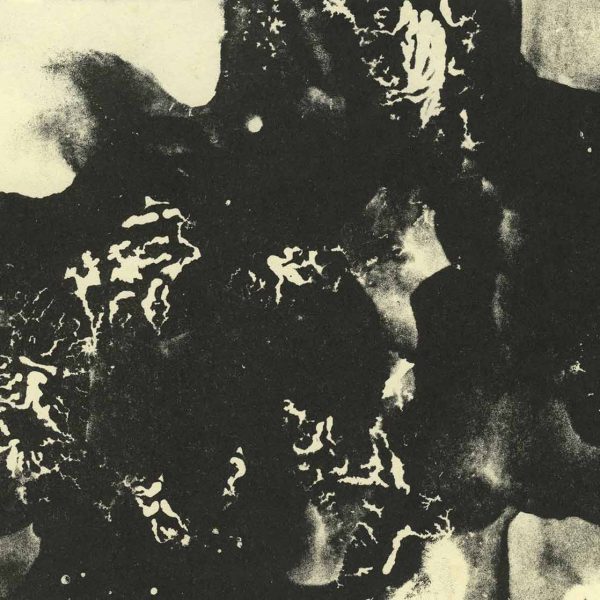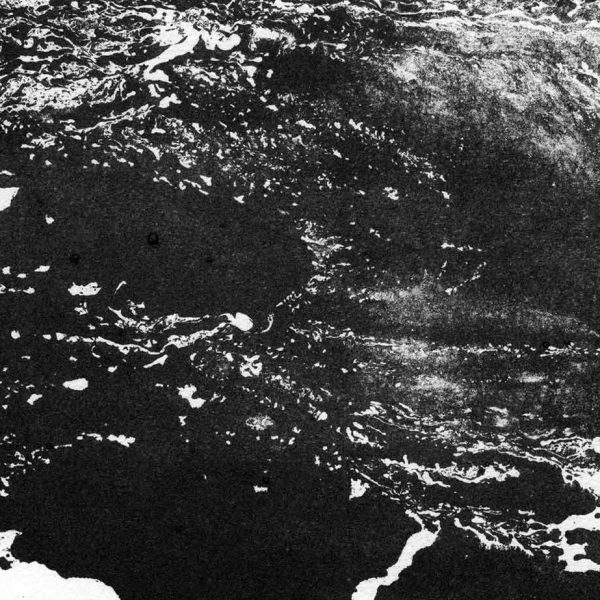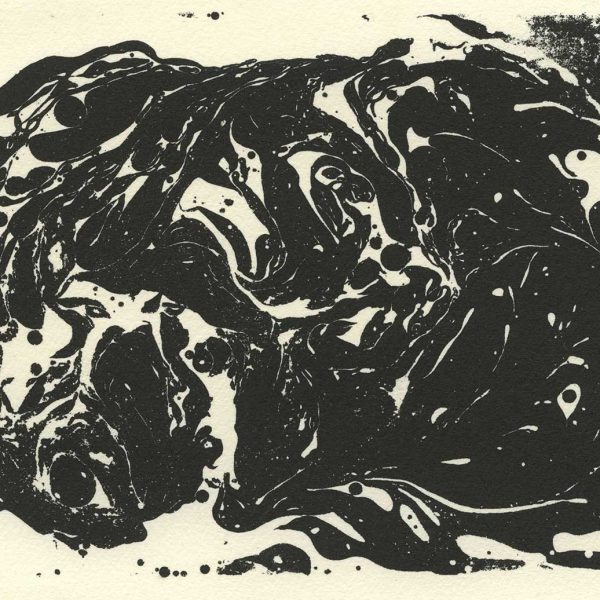Asphaltum and water wash
Materials:
- Water
- Asphaltum
- Turpentine
- Gum arabic
- Nitric acid
- Rosin and talcum

No related techniques
Asphaltum and water wash is a technique similar to marbling that we know from endpapers in old books. Very characteristic patterns of oily asphaltum are floating on top of the layer of water, not mixing with it. Same as in case of marbling – those patterns can be formed, mixed…
The edges of a well grained, washed out with water and fully dry lithographic stone have to be covered with gum arabic, dried and covered with plastic tape (water-resistant adhesive tape).Water can be poured inside the area enclosed by the tape (to get a convex meniscus). Before pouring the water, the stone should be leveled using a spirit level. If the leveling is bad the water will flow in one direction.
Asphaltum thinned with turpentine can be poured on top of the water using a brush or a wooden stick. A wash can be formed by gently mixing substances, dropping water or asphaltum, adding some items (sticks, stencils…)
When the water evaporates the wash will sit on the surface and stick to it.
If asphaltum does not stick to the surface and some fragments are just “lying” on the stone the wash needs to be fixed. You can do it inside an acetone box (hermetic wooden or cardboard box with some cloths attached inside and soaked with acetone). After about 20 minutes all the asphalt should stick firmly to the surface.
The next step is dusting the image with rosin and talcum and covering it with a layer of gum arabic. The drawing doesn’t need strong etching if it’s sharp. Gum arabic alone should work well. In case of gradients and huge range of tones in the wash drawing a few drops of nitric acid need to be added to the gum arabic.
Remove the substance with a cheesecloth, dry the stone and remove the image using turpentine. Afterwards rub in shellac and asphaltum. When they evaporate the stone should be washed out with water, moistened and rolled up with ink.
Tonal washes may get darker and darker so it’s needed to stop rolling up at the moment that we find satisfying. Then – after rosin and talcum are applied – the second etching should be performed. This time – especially in case of tonal drawings – the etching solution should be strong (12-15 drops of nitric acid in 30 ml of gum arabic).



